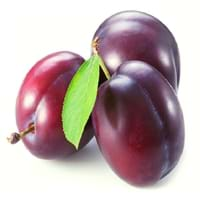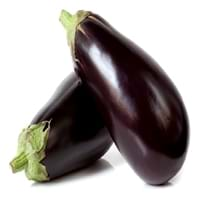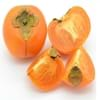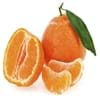Health Benefits
Cancer prevention, Cures gastro-intestinal troubles, Heart care, Increase in haemoglobin, Prevents diabetes
Cancer prevention, Heart care, Reduces blood circulation problems
General Benefits
Anti-inflammatory properties, Boosts immune system, Digestive aid, Eye care, Flu treatment, Helps in weight loss, Maintains healthy cholesterol level, Treatment of common cold
Digestive aid, Fights against infections, Flu treatment, Healing of wounds, Helps in weight loss, Treatment of common cold
Skin Benefits
Anti-aging benefits, Brightens and lightens complexion, Reduces wrinkles, Skin revitalization, Treatment of dark spots
Anti-aging benefits, Brightens and lightens complexion, Skin cleansing, Skin rejuvenation
Hair Benefits
Prevents hair loss, Promotes longer and healthier hair, Protects hair, Remedy for split ends, Treatment of dandruff
Prevents hair loss, Promotes longer and healthier hair, Protects hair, Rejuvenates scalp
Allergy Symptoms
Abdominal pains, Anaphylaxis, Vomiting
Abdominal pains, Anaphylaxis, Diarrhea, Dizziness, Hives, Itching in tongue and other parts of mouth, Tingling sensation in mouth, Vomiting
Side Effects
Allergic reaction
Allergic reaction, Irritation, Nausea, Skin rash, Swelling
Best Time to Eat
As a snack in the late afternoon, Eat the fresh ones, avoid mixing with any other foods, don't eat after meal., Morning time (before lunch)
Along with meal, Don't consume at night and before bed
Vitamin A (Retinol)
Not Available
Vitamin B5 (Pantothenic Acid)
Vitamin C (Ascorbic Acid)
Vitamin K (Phyllochinone)
Calories in Fresh Fruit with Peel
Calories in Fresh Fruit without Peel
Not Available
Not Available
Calories in Frozen Form
Not Available
Calories in Dried Form
Not Available
Calories in Canned Form
Not Available
Calories in Jam
Not Available
Calories in Pie
Not Available
Type
Tree fruit
Fruit vegetable, Tropical
Season
Summer
Spring, Summer
Varieties
Victoria, President, Czar, Ariel, Avalon and Oullins Gage
Black Magic, Black Beauty, Black Bell, Sicilian, Italian, Indian (Baby), Japanese, Chinese and White
Color
Pink, Purple, Red
Black, Green, Pink, Purple, Purplish black
Inside Color
Yellow
White
Taste
Juicy, Sweet, Tart
Bitter, Slightly sweet, Spongy
Soil Type
Clay, Loam, Sandy loam
Sandy loam
Climatic Conditions
Cold
Warm to hot climate
Facts about
- In china, plums are used for production of wine.
- A chemical called amygdalin found in plum seeds, turns into toxic compound in human body.
- Plum tree produces fruit 3-5 yrs after planting.
- In Italy, it's a belief that diet rich in eggplant leads to madness. Hence, they call it a 'crazy apple'.
- Eggplant contains nicotine & can help quit smoking.
- Juice made from its leaves and roots is medicinal.
Other Countries
Bosnia, Chile, India, Iran, Italy, Romania, Serbia, Turkey, United States of America
Egypt, India, Indonesia, Iran, Iraq, Italy, Japan, Spain, Turkey
Top Importer
United Kingdom
United States of America
Botanical Name
Prunus domestica
Solanum melongena
Synonym
Not Available
Solanum ovigerum or Solanum trongum
Subkingdom
Tracheobionta
Tracheobionta
Division
Magnoliophyta
Magnoliophyta
Class
Magnoliopsida
Magnoliopsida
Subclass
Rosidae
Asteridae
Family
Rosaceae
Solanaceae
Species
P. domestica
S. melongena
Generic Group
Rose
Not Available
Compare Plum and Eggplant
It is important compare Plum and Eggplant as both the fruits have a different nutritional value. Their comparison can be done on the basis of their vitamin and mineral content, calories, benefits as well as characteristics, making it easier for us to choose the best fruit for our diet. Their general health benefits are as follows:
Plum Benefits: anti-inflammatory properties, boosts immune system, digestive aid, eye care, flu treatment, helps in weight loss, maintains healthy cholesterol level and treatment of common cold.
Eggplant Benefits: digestive aid, fights against infections, flu treatment, healing of wounds, helps in weight loss and treatment of common cold.
Fruits are also used as a remedy for various hair problems. The hair benefits of Plum are: prevents hair loss, promotes longer and healthier hair, protects hair, remedy for split ends and treatment of dandruff and hair benefits of Eggplant are: prevents hair loss, promotes longer and healthier hair, protects hair and rejuvenates scalp. Some fruits are known to cause allergic reactions. The allergy symptoms of first fruit are: abdominal pains, anaphylaxis and vomiting and the symptoms of second fruit are: abdominal pains, anaphylaxis, diarrhea, dizziness, hives, itching in tongue and other parts of mouth, tingling sensation in mouth and vomiting. Get sorted Plum vs Eggplant comparison with the help of fruit comparison tool by fruitvs.com.









